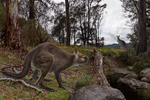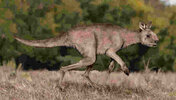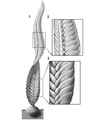- Thread starter
- #126
Good on you.I've just recently found out i can volunteer my time online and transcribe botany specimen data sheets from the sa museum so they have a digital record of them, it's very interesting to go through.
Follow along with the video below to see how to install our site as a web app on your home screen.
Note: This feature may not be available in some browsers.
Good on you.I've just recently found out i can volunteer my time online and transcribe botany specimen data sheets from the sa museum so they have a digital record of them, it's very interesting to go through.




I had a similar feeling seeing the Triceratops MOV has. There was no place for large mammals such as ourselves with T-rex et al running around, lucky that big rock hit.Went to the Adelaide museum today, just seeing the T rex skull cast makes you wonder how crazy the earth was with these magnificent creatures roaming around.


